Women’s role in toppling the govt
A female student, her face streaked with blood, pleads with Chhatra League activists to stop the relentless beatings.
Another lies alone on the ground, surrounded by the taunting faces of Awami League supporters. Two others, sprinting for their lives as BCL members chase them, brandishing rods and sticks.
These were some of the many scenes that emerged from Dhaka University on July 15, when AL and BCL activists attacked quota reform protesters.
Sanjana Afifa, a resident student of Shamsunnahar Hall at DU, said, "Once they [BCL members] spotted us, they lunged towards us and threw brick chunks. We tried to hide, but they hunted us down... At one point, I hid inside a bus and heard the attackers screaming, 'You are razakar (collaborators of the Pakistani army)'. Many of those hiding with me were dragged out and beaten."
The attackers, nearly 500 BCL activists, targeted female students. Their main goal was to prevent the participation of women in the quota reform protest.
But the strategy backfired. The country was outraged, and instead of retreating, the female students rose stronger.
They returned to the protests the next day with a newfound determination.
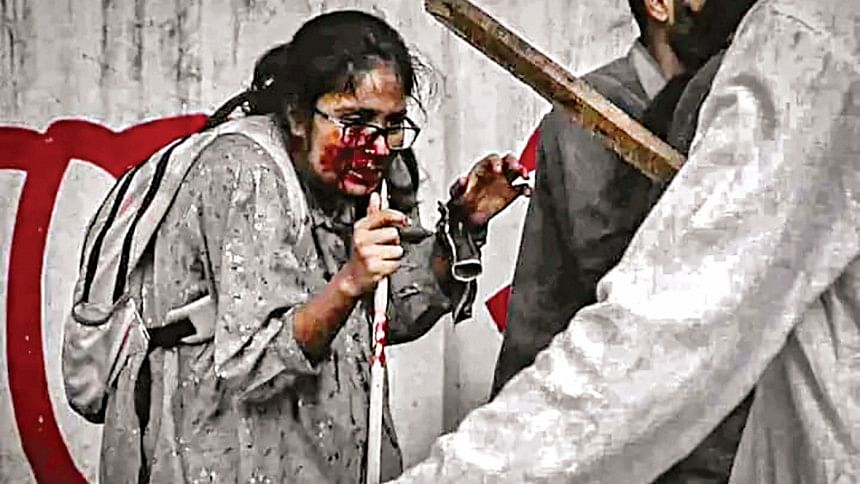
The movement, which began as a protest against an unfair quota system, evolved into something much greater eventually.
From the beginning of the protests on July 5 to the day Sheikh Hasina was forced to resign and flee on August 5, female students were at the forefront of the movement.
Some scenes from the protests have become emblematic of the resistance. In front of the Supreme Court, a lone female student stood defiantly before a prison van, using her bare hands to stop it from driving away with her detained friends.
Tangila Tasnim, a resident of Ruqayyah Hall at DU, joined the protests on July 5 not because she aimed to secure a government job, but to ensure fairness for those who did.
"It was all peaceful until Sheikh Hasina called us razakars. We could not accept it," she said.
The female dormitories of DU generally get locked within 10:00pm.
But on July 14, after Hasina's controversial press conference, at least 700 Ruqayyah Hall students broke the gates of the dorm at 11:30pm and took to the streets. Students from all the female dormitories then joined in at midnight.
But on July 15, Tangila and her friends were targeted and assaulted by BCL members.
They returned the next day armed with pepper spray and sticks.
On July 16 night, Ruqayyah Hall became the first to chase away BCL leaders, rest of the female dorms followed, eventually setting off a wave of similar actions across all male halls.
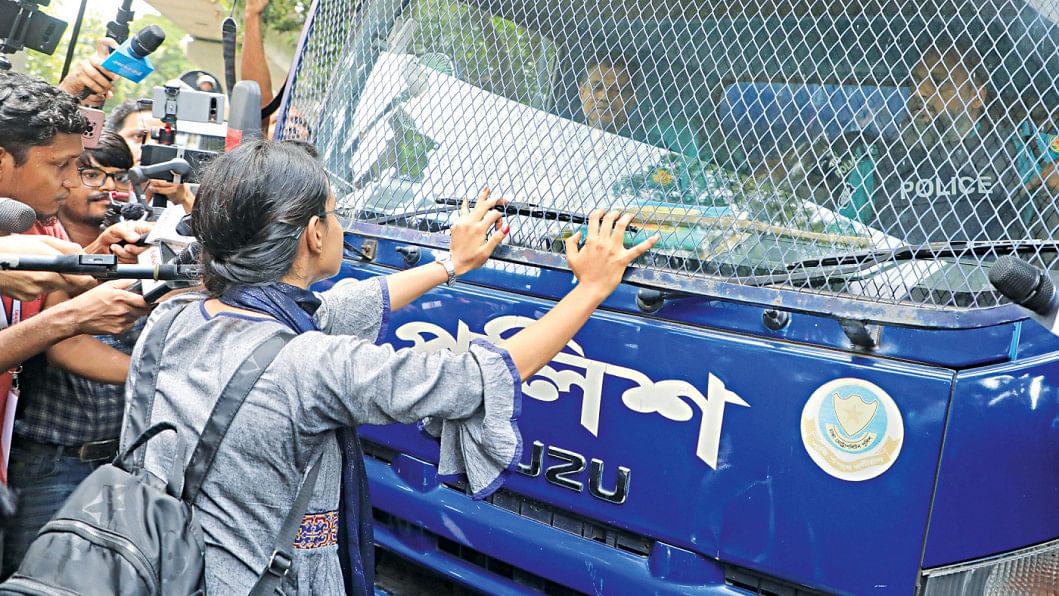
"Dhaka University dormitories were bastions of BCL for 15 long years. What the female students started [chasing BCL away] was unthinkable even a few hours before it actually happened," Tangila said.
The next day, the campus was besieged by police, BGB, and Rab. A sudden directive ordered the evacuation of all dorms.
Tangila, who was off-campus at the time, managed to sneak back in, pack her belongings, and join a protest near the Mall Chattar.
However, when the procession reached the DU public library, it was met with tear gas and sound grenades from the police. Tangila first took refuge in Kalabhaban, then at Jashim Uddin Hall.
Then police started firing in front of the dormitories. Tangila narrowly escaped rubber bullets and shotgun pellets.
"I thought I would be killed," she recalled, as she fled her campus under a hail of gunfire.
She sought refuge in houses of two former DU students. She could not leave Dhaka as the country turned into a warzone by then.
On August 3, Tangila left Dhaka for her home in Rajshahi, hiding her student ID card throughout the journey, fearing it had become a mark of criminality.
She believed she might never return to Dhaka, but then, on August 5, Sheikh Hasina resigned. Tangila said, "Sheikh Hasina resigned, and I got my normal life back."
Nourin Sultana Toma, a Dhaka University student, joined the quota reform protests on July 5. After BCL attacked students on July 15, Toma was forced to return home to Savar.
"However, after I saw the video of Abu Sayed being shot dead by police on July 16, I was outraged. I knew the Hasina government must go. I told my parents I had work, left home, and called them from campus, saying I wouldn't return until we got justice for the murder," Toma recalled how she rejoined the protests.
After the brutal clear-out of the campus, Toma sought refuge in Azimpur Government Colony, in a sublet flat.
On July 18, when law enforcers opened fire on protesters outside the colony, Toma retreated but found her building's gate locked.
She took shelter in another building, where she and others tended to the wounded.
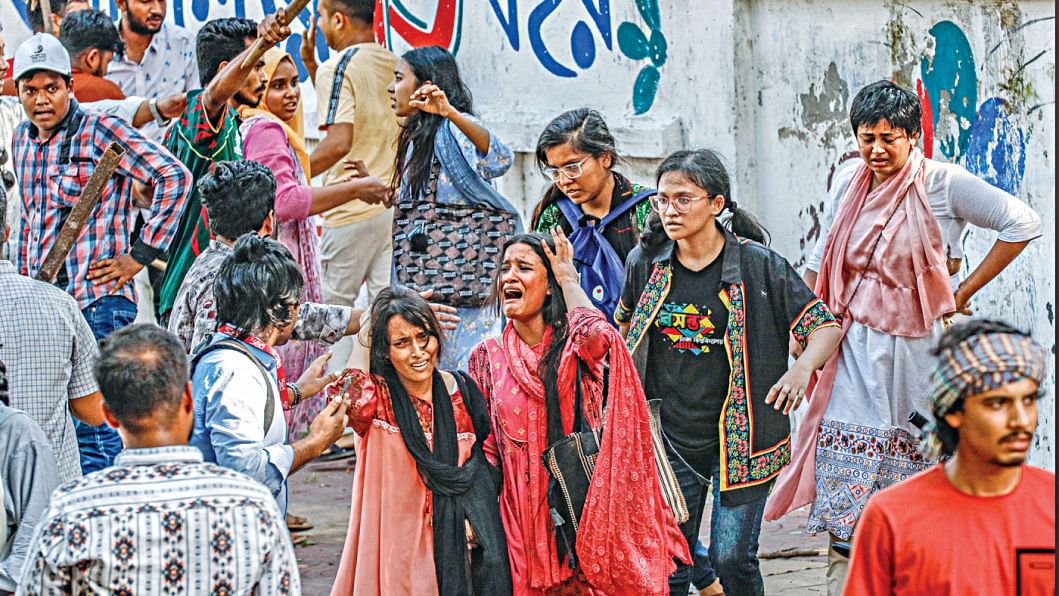
The violence continued the next day.
Sensing the imminent threat of arrest as curfews and internet shutdowns gripped the city, Toma left Azimpur for Savar.
"The night I left, a block raid happened, my room was searched by police. They arrested some of my female friends who stayed back and warned flat owners not to rent to students anymore."
Back in Savar, Toma joined the protests at Jahangirnagar University. She painted graffiti demanding Hasina's resignation.
On August 4, following a call for a march to Dhaka demanding Hasina's resignation, Toma told herself, "I will return to Dhaka, or die trying."
On August 5, Toma, alongside a female friend, braved police, BGB, and army checkpoints to return to Dhaka. Shots rang out near Shahbagh and Central Shaheed Minar, but they pressed on.
Despite their crucial role in the revolution, these women felt sidelined after August 5.
"We are only talking about a select few individuals while discussing the mass uprising," Toma said.
She said the contributions of women, as well as students from Jahangirnagar University, private universities, schools, colleges, and even rickshaw pullers, should be recognised and celebrated.
Mifthaul Janat Mithila, a college student, joined the protests after witnessing BCL activists attacking protesters at Dhaka University.
"After finishing our HSC exam on July 15, I saw pictures of our senior sisters being beaten by BCL men. I couldn't just sit back. I joined the protests the very next day," she recalled.
"I saw people being killed, my friends being arrested, police shooting at us. But we did not back down," she said.
Sazzad Hosain, another college student, said he fell unconscious after BCL members attacked him in the Science Lab area.
"When I regained consciousness, I found myself in a city hospital, being cared for by female students. They brought me there, risking their lives. If they hadn't, I would have bled to death."
His friend, Al Fahad, said after being attacked and handed over to the police by BCL, he was saved by female students who intervened.
"The police were trying to take me away, but some apus [sisters] arrived like angels and held onto me tightly. They didn't let me go."
'MOTHERS OF MARTYRS'
On July 19, as the BGB fired live bullets at protesters in the Bansree and Rampura areas, many women, mostly mothers, acted as human shields to protect the students.
These women provided first aid and water to students, and also took the injured to hospitals. When the student dormitories were cleared and block raids began, they opened their homes to protesters, offering shelter.
Many mothers also lost their children since July 18.
Selina Begum, the mother of 18-year-old Shawon, who was shot dead by BGB in Rampura, said, "My son died a martyr. I am a proud mother."
Similarly, Yasina Akhter, whose 16-year-old son Ahmed Imran was killed by police in Narayanganj, said, "I am proud to be a mother of a martyr."
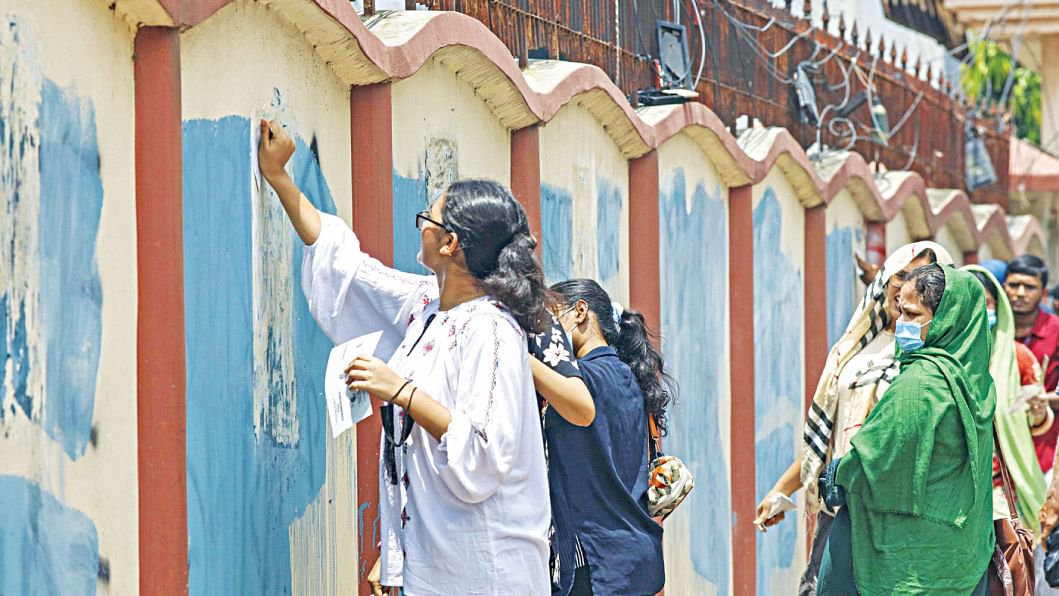
FACES OF THE REVOLUTION
Nusrat Tabassum is one of the six protest coordinators who was detained by the DB without formal charges and coerced into making a statement to withdraw all protest programmes.
On the night of July 19, DB officers entered her home without a warrant, she said.
They detained her and subjected her to severe physical and mental torture over six days, using intimidation tactics to extract statements.
Eventually, after starting a hunger strike in protest, Nusrat and the others were informed they would be released, she added.
On the protests of July 14 against Hasina's statement, she said, "That night, we didn't expect all the female students to gather in just a few minutes. The consensus among the women was clear: if the male students were barred from coming out of their halls by BCL, we would break the male dormitories locks and get our brothers out."
"When we gathered at Raju Sculpture, there were only a handful of male students present. We marched to the VC's office, and eventually, the male students joined us. We returned to the hall around 2:00am."
On July 16, as police opened fire inside DU, the female students were the last to leave their halls, she said.
Rafia Rehnuma, a female leader of the movement, said they held strong despite facing brutal attacks, and fought till the last day alongside their male counterparts.
Umama Fatema, another female leader of DU, echoed her.
She said they don't want dormitory based student politics, rather she called for student council elections.

 For all latest news, follow The Daily Star's Google News channel.
For all latest news, follow The Daily Star's Google News channel. 



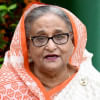

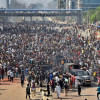
Comments